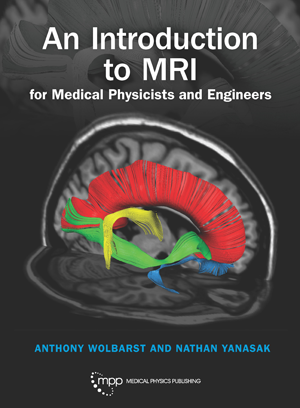
An Introduction to MRI for Medical Physicists and Engineers
Author: Anthony Wolbarst and Nathan YanasakISBN: 9781930524200
Published: June 2019 | 318 pp | Hardcover
Price: $ 120.00
Doody's | Sep 2020
Andrew D. A. Maidment, PhD (UPenn Medical Center)
Description Anthony Wolbarst, together with co-author Nathan Yanasak, has produced another well-written and approachable book - this time addressing the physics of magnetic resonance imaging (MRI). Purpose The book is well suited to graduate courses on MRI, providing an excellent framework for didactic instruction. Advanced topics, including Fourier analysis and k-space, are explained with increasing complexity to enable readers new to the field to grow their knowledge. Audience The book, written at the beginning graduate level for medical physicists, bioengineers, and other imaging scientists, provides a thorough grounding in the underlying physics. Other readers, such as radiologists with a strong interest in MRI physics, will also find this book of interest. Features As with many books in the field, the text begins with a non-mathematical introduction to MRI, including a series of case studies illustrating the many uses of MRI in medicine. This is followed by a more detailed view of the field. A chapter on the mathematics needed to progress in MRI physics leads the next section, which details the physics of MRI. This is followed by the last section, which begins with a chapter on instrumentation. In doing so, the authors can speak intelligently about the various scanning sequences with specific reference to how they are implemented clinically. They discuss in detail specific methods, such as echo planar imaging, and advanced topics, such as MR angiography, perfusion, and diffusion. The book also deals with details specific to medical physics including safety issues. The last chapter is a "crystal ball" view of the future, which is an interesting addition, especially for students who are thinking of their next career steps. Assessment As with all Wolbarst's books, the figures are of high quality and I am sure they will find their way into many PowerPoint presentations in the future. Hopefully, the authors will make these available for teachers as they have in the past. Ultimately, the authors are almost too enthusiastic about the topic, even disparaging the competition ("MRI. reveals the structural, anatomic details of soft tissues, often much better than do CT or other imaging modalities," presenting "unique kinds of information. to which CT and other modalities are oblivious"). This reflects the somewhat folksy, informal language that sometimes rears its head; beyond that, however, there is little to complain about this excellent book. ----------------------------------------------------------- Weighted Numerical Score: 86 - 3 Stars (out of 5 stars)


